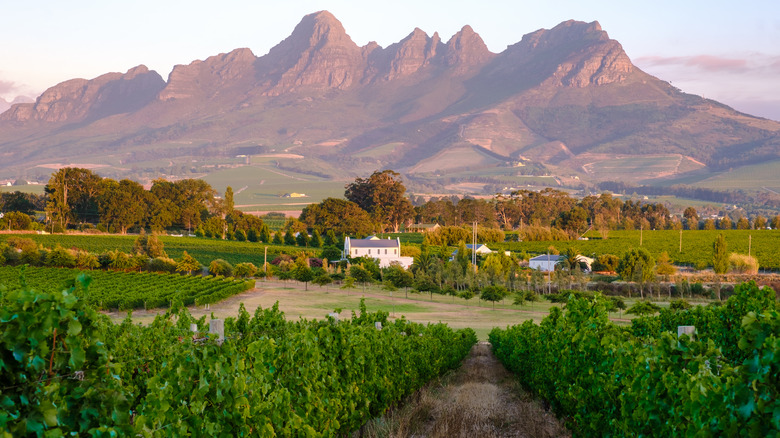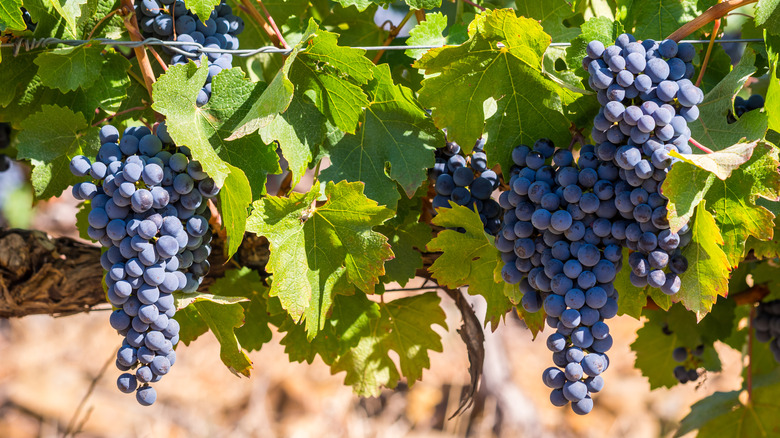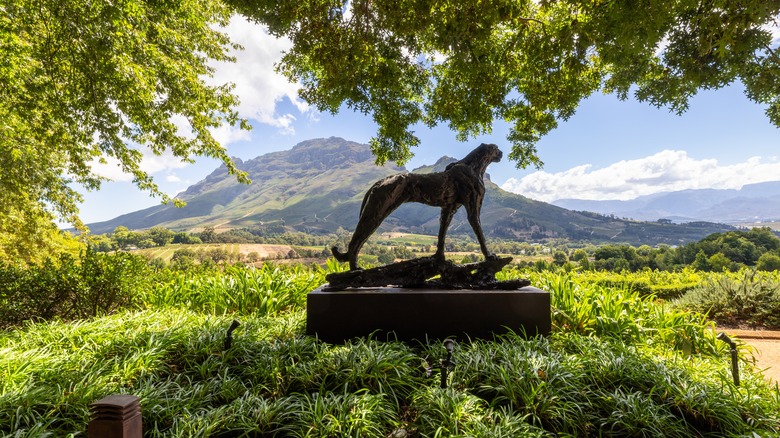South Africa's Top Tourist-Friendly Wine Region Offers World-Class Sips Without Huge Crowds
The iconic Napa Valley is one of California's famed wine regions, and you might know Loire, Bordeaux, and Burgundy for producing some of France's most iconic grapes. Australia and New Zealand come from down under with notable vinos like the spicy shiraz and refreshing sauvignon blanc. Portugal's Duoro Valley may ring a bell for its fortified port wines. And Italy's Tuscany may conjure up visions of tart, ruby red chianti.
Enter: South Africa, a nation often quickly recognized for its animal-centric activities and destinations like its penguin-packed beach, thrilling safaris in Kruger National Park, or cage diving in shark-infested waters. But there's a more intoxicating, less explored side of South Africa brimming with rolling hills and untapped potential: The Cape Winelands. Comprised of several small towns and three major cities — Franschhoek, Paarl, and Stellenbosch — the Cape Winelands are situated less than an hour's drive to the east of Cape Town, South Africa's legislative capital and "mother city." These towns are so close that it's even possible to visit all three in one day.
Indulge in uncommon wine varietals in the Cape Winelands
It feels like there's never a bad season to sip and savor a glass of wine. And in the Cape Winelands, that feeling holds true; however, there are a few prime months for tasting and touring that are better than the rest. September and October, the start of spring, boast temperate days and cool nights with fewer crowds, while November through January is peak season with clear skies and warm days that hover in the mid-70s to high-80s.
A trip to South Africa's wine country will have you seeing familiar grapes like chardonnay, merlot, and cabernet sauvignon. But you might also notice a few unfamiliar varietals gracing your tasting menus, like chenin blanc and pinotage.
Chenin blanc originated in the aforementioned Loire Valley and is only predominantly grown in South Africa, as well as some parts of California. The dry white wine features notes of ripened (sometimes tropical) fruits in South Africa. In France, the chenin's acidity is showcased, typically alongside notes of citrus fruits and florals. The pinotage is a uniquely South African creation, dating back to 1925. This red blend, created by Stellenbosch University's first viticulture professor, fuses pinot noir and cinsault grapes. Its unique flavor profile evokes jammy notes of dark, ripe fruit (think blackberry, fig) and a smoky (or earthy) finish.
Another South African standout, that is unique based on its production methods, is méthode cap classique (MCC). It's a bubbly wine created in the same way a champagne (from the region in France) is.
A region bursting with renowned cellars and restaurants
A locale where Cape Dutch architecture shines is Stellenbosch, South Africa's second oldest town and home to 31,000 acres of vineyards. If this makes your itinerary, a stop at Delaire Graff Estate is a must. It's noteworthy not only for its exceptional wines but also sprawling vistas and luxurious accommodations, complete with private pools (either plunge or full-size). Another nearby Stellenbosch stunner is Tokara, which boasts wine and olive oil tastings, art gallery and sculpture gardens, and a fine dining restaurant open for lunch and dinner.
Quaint Franschhoek, which translates to "French corner" in the local Afrikaans language, is wrapped by mountains on three sides and also features original Dutch-style buildings. A fun and convenient way to explore the town's wineries is via the open-air Franschhoek wine tram. Five different lines (blue, navy, orange, pink, and red) explore various parts and wine estates of the Franschhoek Valley. Take your pick from a hop-on, hop-off tour (around $17, excluding wine tastings) or a curated wine experience (around $100) that includes several tastings and a three-course lunch. A bonus? The company will also help you arrange roundtrip transfers from Cape Town, so you can sip responsibly.
Over in Paarl, which translates to "pearl" in Dutch, you'll find a locale steeped in wine history. French Huguenots planted vines back in the 1860s and the historic government wine co-operative, KWV, was founded in Paarl in 1918, the year Nelson Mandela was born. Those fascinated by organic and biodynamic wines will enjoy a crisp glass of vino and a unique eco wine safari at Avondale Estate. Once you've hit up the big three, there are even more wine-besotted towns to visit nearby. For one, Wellington, a favorite of travel guru Samantha Brown, is less than a 15-minute drive north of Paarl and colloquially known as "The Cradle of Wine."


